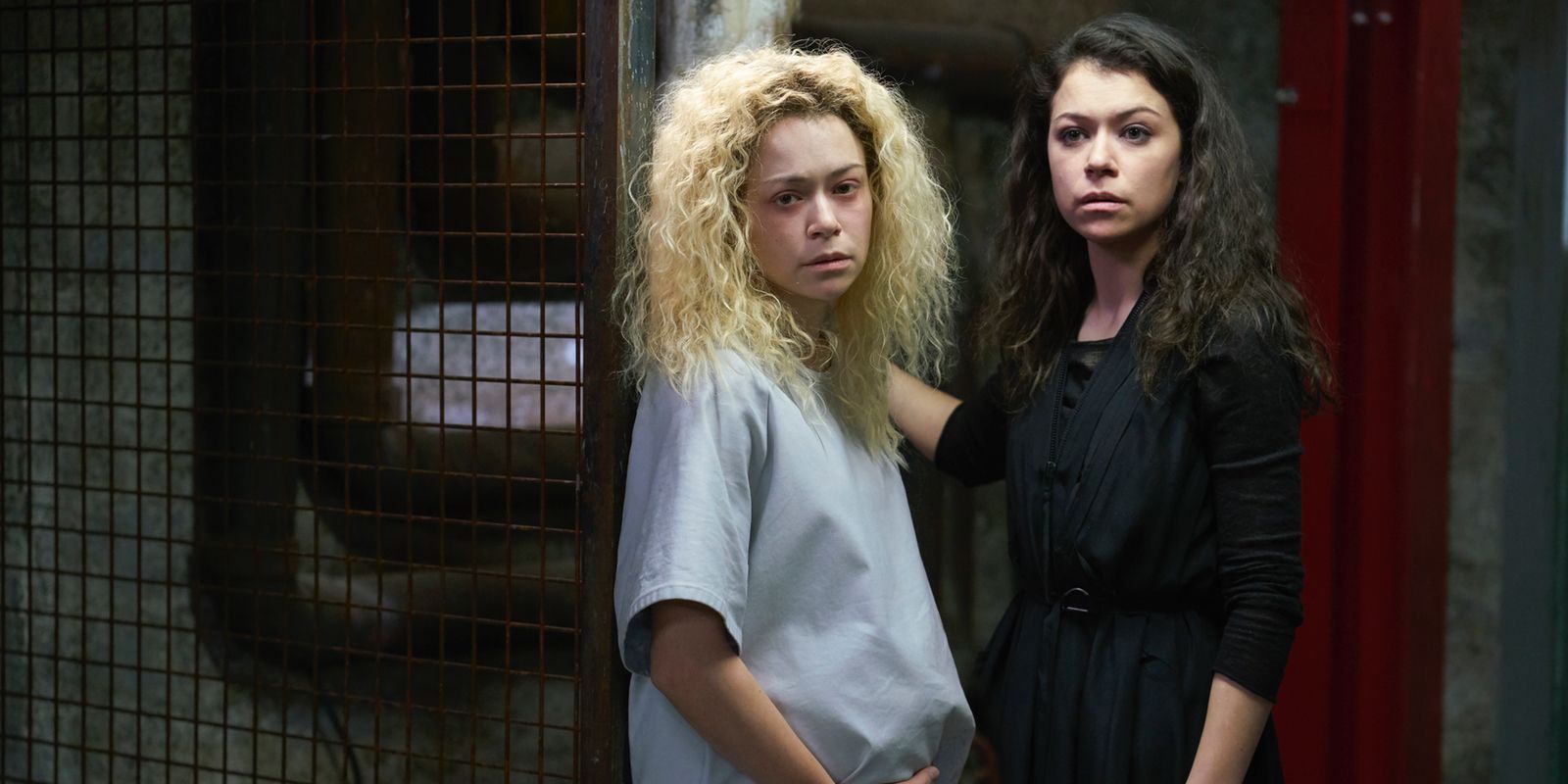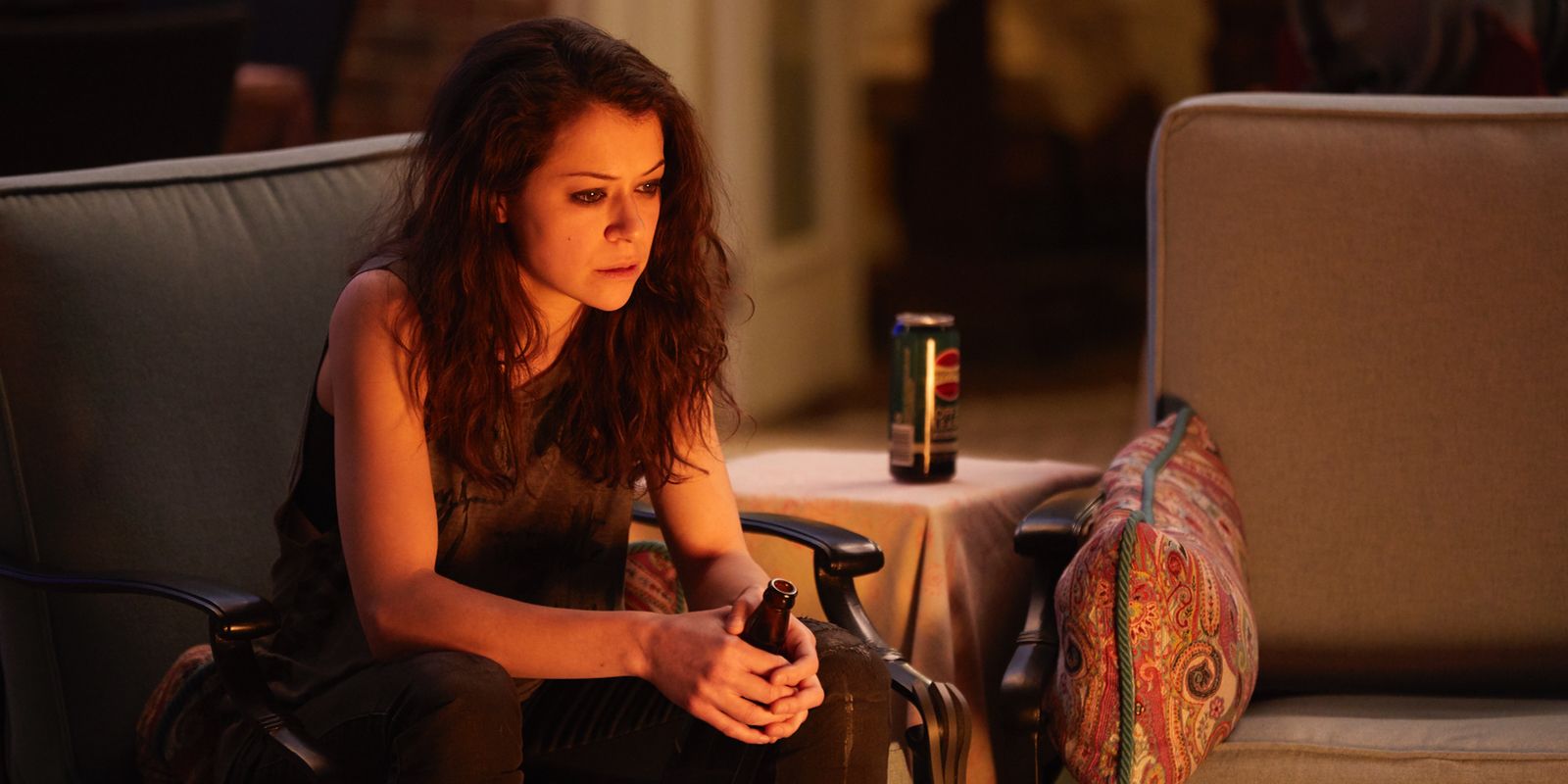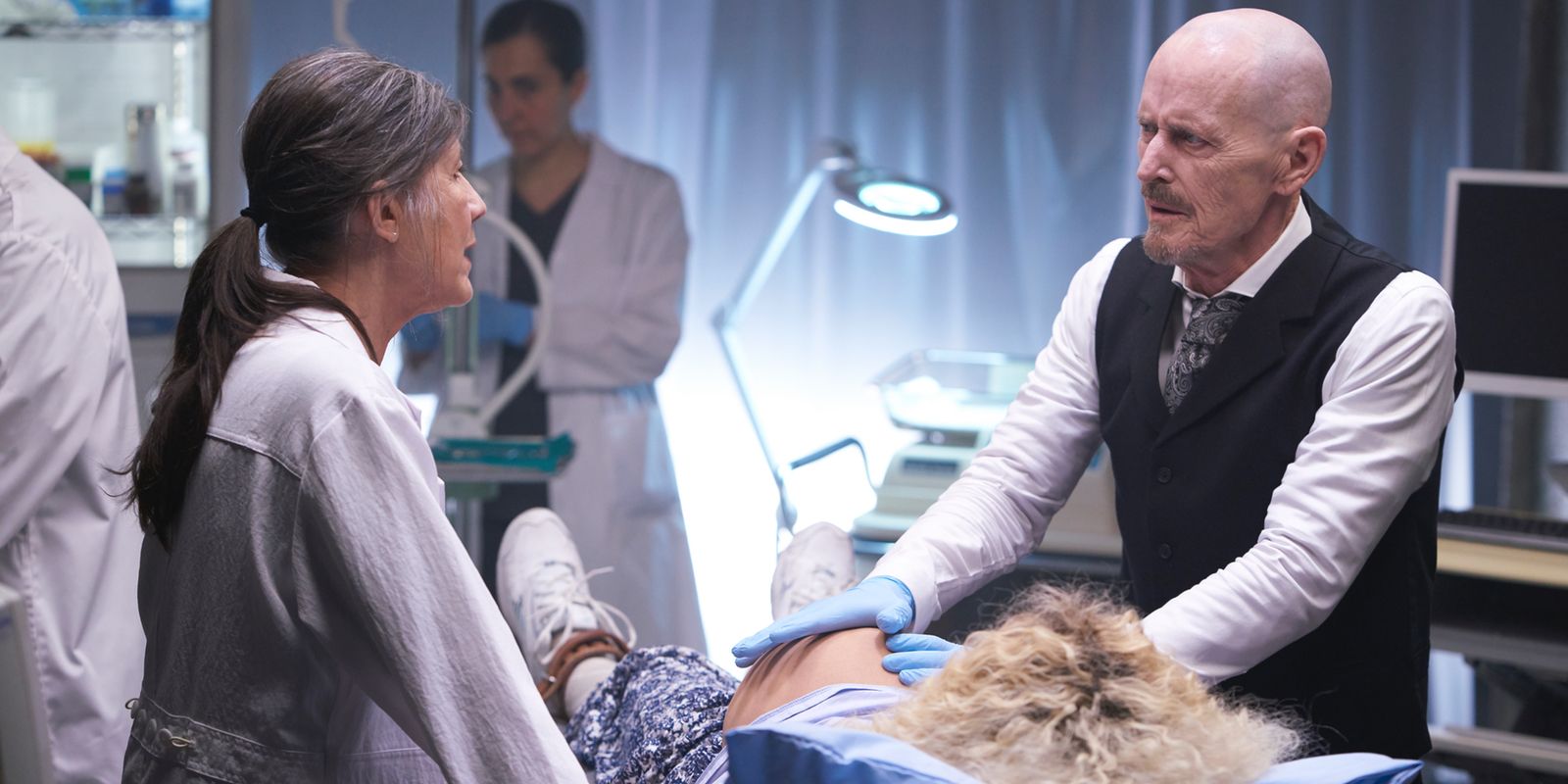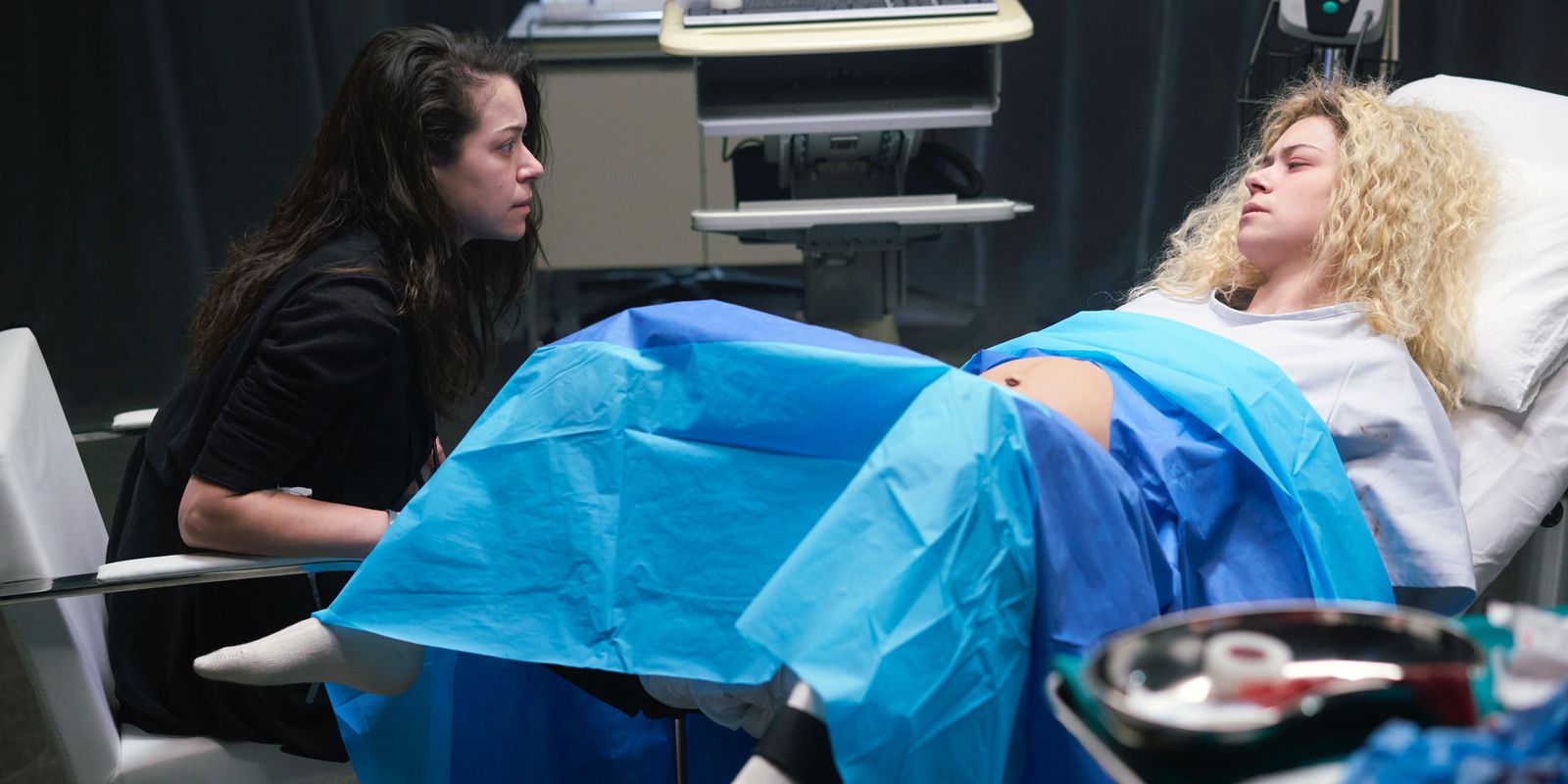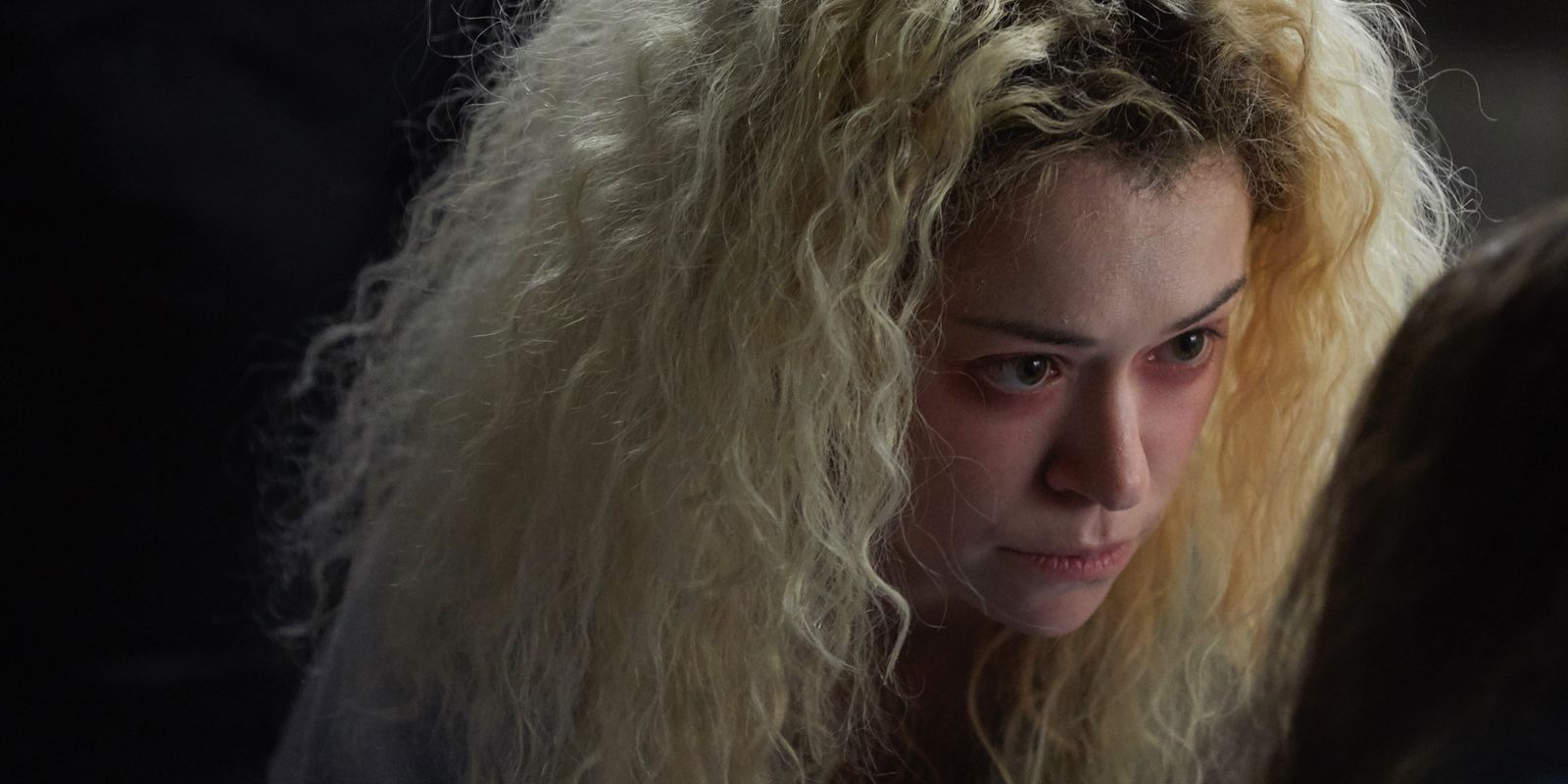BBC America's clone drama Orphan Black brought its story to a resounding conclusion with the taut finale 'To Right the Wrongs of Many'. It was an hour that was split between two needs: to ensure the ongoing conflict between a group of unwitting subjects and a massive genetic experimental undertaking was resolved, and for the clones – or "sestras" – to be given some semblance of a future free from the intrusions of Dyad, the Neolutionists, and P.T. Westmorland.
To that end, the series finale served both rather well. Part of that was in how the final season approached its story: wrapping up as many loose ends as possible, like Ferdinand Chevalier and Rachel's dithering allegiance to Dyad, as well as a shocking and emotional end for Mrs. S. But there's still plenty to discuss and explore in greater detail. So let's take a look at 'To Right Many Wrongs', the terrific series finale of one of the best sci-fi shows in recent memory.
It's About Choice
So much of Orphan Black is about the idea of choice and agency, and specifically what those two things mean for women who too often find they live in a world intent on depriving them of both. The notion of choice is at the heart of the Neolution movement and Dyad's experiments that resulted in the creation of Sarah, Alison, Helena, Cosima, and Rachel (and more, of course), reducing human lives to intellectual property for the benefit of a wealthy man who was, for all intents and purposes, a fraud par excellence.
'To Right the Wrongs of Many' offers a compelling follow through aligned to its exploration of choice with Sarah coming to Helena's rescue just as the latter was preparing to give birth. As Dyad's only twins and the only two fertile clones in the program, the episode smartly weaves in a flashback to Sarah's experience wrestling with the choice of whether or not to keep Kira during the early part of her pregnancy. It's a potent through-line that's created, one that emphasizes the relationship between Sarah and Helena but also juxtaposes their larger experiences growing up and how that shaped them into the women they'd later become. Whereas Helena saw her agency removed first by the nuns of the orphanage she spent time in and later by the man who manipulated her into killing her sisters and thinking she was the original clone, Sarah was given Mrs. S – who walked a finer line between manipulation and maternal love. And by intercutting between the birth of Kira and Helena's twin boys, Orphan Black aligns two of its main characters while also paying respect to Maria Doyle Kennedy's Siobhan who unexpectedly died at the end of the eighth episode.
The birth of Helena's twins, while she being held captive by Dyad, serves a dual purpose in that it underlines a prominent recurring theme of the series and also provides the first half of the hour with some appropriately high-level stakes with which to wrap up the Dyad-Neolutionist plotline. With Sarah and Helena both in jeopardy, the finale deftly juggled two pressing concerns with an economical pace that satisfactorily concluded the main story and left plenty of room for an extended coda that paid off the series' emotional investment.
The Fall of Dyad and the End of P.T. Westmorland
For the most part, Orphan Black had already wrapped up the Dyad storyline when Ferdinand and Siobhan took each other out in 'Guillotines Decide'. The fall of Dyad, thanks in large part to Rachel, effectively brought the corporation to its knees, and although P.T. Westmorland exhibited considerable influence afterward, his time on earth was guaranteed to be as short-lived as the company and futurist movement he headed.
Westmorland was something of a boogeyman at the beginning of the season. His existence, role in the story, and even the very Dr. Moreau-esque island on which he lived is in many ways a reflection of the series as a whole. The potentially far reaching implications of Westmorland's supposed longevity and the Neolutionist movement following him suggested a story much larger than the one being told. And while that remains true to a certain extent, given the true number of clones that exist, discovering Westmorland was also something of a charlatan granted Orphan Black the kind of narrative elasticity necessary to stretch the story and make an already extraordinary tale even more so, before shrinking back down to something much more manageable and, ultimately, fulfilling on an emotional level.
It's a neat trick in selling the audience on the same story the villain is selling to the world in the series itself, and then treating both to a front row seat of his downfall as part of the protagonists' hard-fought victory.
"Sestras" United In a Short Time Jump
Although it's really the second half of the episode, 'To Right the Wrongs of Many' features an extended coda that pays off the progression of Sarah, Helena, Cosima, Alison, and even Rachel, and justifies the investment audiences have had over the last five seasons. Although there's a time jump, it's only just enough to get Sarah and Helena out of the Dyad institute without getting wrapped up in what is likely a bureaucratic quagmire following the death of both Dr. Coady and P.T. Westmorland, not to mention the involvement of cops like Maddy Enger.
It's a small but necessary opportunity to peek into the lives of these characters, to see what's in store for them and how they'll manage now that they've attained a greater sense of agency in their lives, and are free to make choices without a vast multinational corporation claiming ownership of them. And as the finale demonstrates, some of the choices yet to be made are not easy ones. Orphan Black again makes a touching statement on the death of Mrs. S by signifying the way in which she was, despite the conflict that often arose between them, the mooring line for the sometimes-wayward Sarah. But it also underscores the degree to which the Clone Club has come to rely on one another as something more than a means of survival.
Watching and listening as the "sestras" sat with one another and shared details of their concerns was one of the most human moments in a series that never lost sight of its characters' humanity despite the outlandishness of its central plot. The distinctions in the central characters are brought to light – as is the remarkable nature of Maslany's Emmy-winning performance – and we are presented with wonderful little pieces of each woman's personality. Sarah's guilt over lying to Kira about getting her GED gets the ball rolling, and is followed up with Helena's ongoing struggle with newborns Donnie and Arthur (née Orange and Purple) eating sand. Alison too shares some awareness of how difficult it can be to be a mother, whereas Cosima reflects on what it means to not feel the pull of motherhood.
The intimate nature of their gathering puts a nice capper on the series, even though it was left until later to see whether or not Sarah would stay in Siobhan's house with Kira or if she would leave her newfound family behind. In the end, she chose to stay, and with Felix's art career taking off, it looks like there's a happy end for the trio that started it all.
What Does the Future Hold?
With Westmorland and his cadre of scientists dispatched, the Dyad group in ruins, and the Neolutionists in open revolt on their bizarre little island, the future seems very clear for the Clone Club and the nearly 300 other clones around the world. While Cosima and Delphine travel the globe to surreptitiously deliver the life-saving vaccine to the other clones, the rest of the clones appear to settle into a comfortable domestic life. Helena gives her twin sons fitting names, while Alison and Donnie keep the romance alive with a little post-racquetball striptease in the laundry/music room set up in their house. Rachel is the only core clone to be left out in the cold, and even she acknowledges that as apt considering all she's gone through, caused, and lost in her dealings with the others.
As far as Kira's concerned, however, Orphan Black never really had the chance to explore her connection to the clones and why, outside of narrative necessity, she could sense their pain on an almost psychic level. It's one of the questions of the series that seems could be explored in greater detail, especially now that Helena has added to the brood with children of her own. Will Donnie and Arthur share in Kira's uncanny ability, or will their gender leave them untethered to the other women in the group?
It's an interesting question, one that feels right to leave open and without further explanation. Had the series been about Kira from the start, it would make sense to want a more definitive answer regarding her abilities, how they work, and what they mean for her future. As it stands now, leaving those questions on the table puts the emphasis on Sarah and her sisters right up until the very end. The door is open for more, but this is a satisfying and resounding conclusion to the series.
Next: Orphan Black The Final Season Premiere Expertly Sets Up The Series’ Endgame
Orphan Black can be seen in its entirety on the BBC America app.

